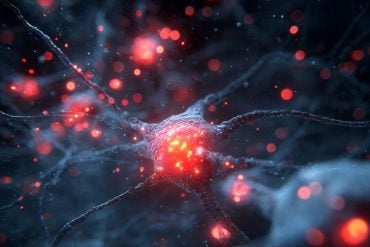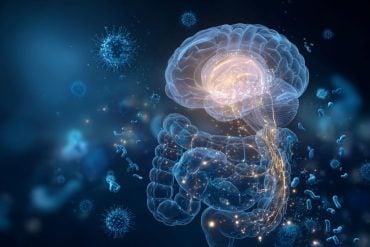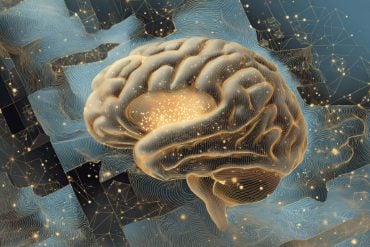Summary: Scientists have uncovered a brain circuit in the subthalamic nucleus that causes discomfort when activated, shedding new light on the neural roots of aversion. This finding has significant implications, as it demonstrates the subthalamus’s potential role in depression and the side effects of deep brain stimulation (DBS) therapy for Parkinson’s.
Researchers used optogenetics in mice to pinpoint the neural circuits involved, which could lead to more precise treatments for neurological disorders without adverse effects. The research offers hope for better clinical outcomes for patients with Parkinson’s disease and similar conditions.
Key Facts:
- The subthalamic nucleus, known for movement control, is now linked to producing a strong sense of aversion and discomfort.
- Optogenetic stimulation in mice revealed a lasting avoidance behavior, hinting at the subthalamic nucleus’s connection to the brain’s emotional systems and potential role in depression.
- The discovery may explain why some Parkinson’s patients undergoing DBS therapy experience depression, paving the way for treatments with fewer side effects.
Source: Uppsala University
Researchers have identified a new neural circuit in the brain which produces a strong sense of discomfort when activated.
The discovery also allows them to show for the first time that the subthalamic nucleus, a structure in the brain that controls voluntary movements, may also play a role in the development of depression. The results could lead to better treatments for Parkinson’s disease.
The study has been published in the scientific journal Cell Reports.

“Our study shows that a specific region of the brain is involved in aversion and avoidance behaviour when stimulated. We’ve studied how mice behave when the subthalamic nucleus is activated using optogenetic stimulation,” explains Åsa Mackenzie, Professor at the Department of Organismal Biology at Uppsala University, and the lead author of the study.
The research team has previously discovered that mice whose subthalamus is activated seek to get away from the stimulation.
In the new study, they were able to show that this behaviour is linked to aversion and that the avoidance behaviour not only takes place while the subthalamic nucleus is activated, but also that the discomfort lingers in the memory.
When the mice were placed in the same environment at a later time, they showed an equally strong avoidance behaviour even though the stimulation was now deactivated. The associations were thus strong enough to sustain the behaviour.
Aversion is the opposite of reward and plays an important role in making us avoid things that make us feel bad. In humans, it is known that strong activation of the brain’s aversion system can lead to depression.
In the new study, the researchers have not only discovered the location in the brain in which the aversion occurs, but have also identified neural circuits originating in the subthalamic nucleus that connect directly to the brain’s emotional system, which becomes active during strong feelings of discomfort.
“That the subthalamus gives rise to aversion and avoidance behaviour is an important finding for two main reasons. It increases our understanding of the brain’s emotional system and how brain activity can lead to psychiatric symptoms such as depression and apathy.
“Secondly, it may explain why people with Parkinson’s disease treated with deep brain stimulation (DBS) can experience these kinds of side effects,” continues Mackenzie.
In Parkinson’s disease, the subthalamus is overly active, but stimulating this brain region in severely ill Parkinson’s patients using DBS with implanted electrodes ‘corrects’ this and eliminates tremors and other motor problems. The treatment often works very well. However, some patients experience side effects such as severe depression.
“Now that we can show the subthalamus has a direct link to aversion and connects to the depression centre of the brain, we can neurobiologically understand and explain these side effects. In addition to Parkinson’s disease, subthalamic DBS is also used in cases such as essential tremor and obsessive-compulsive disorder.
“Our study is basic research and paves the way for improved clinical precision in these treatments. The aim is for DBS to treat the symptoms of the disease without causing severe side effects,” says Mackenzie.
The project is a collaboration between researchers at Uppsala University and Bordeaux University. The study was funded by the Bertil Hållsten Research Foundation, the Swedish Brain Foundation, the Parkinson’s Foundation, the Michael J Fox Foundation (ASAP initiative = Aligning Science Across Parkinson’s), the Åhlén Foundation, the Wenner-Gren Foundations and the Swedish Research Council.
More on the researchers’ methodology
The researchers used optogenetics to ensure they only stimulated the subthalamic nucleus and not any other brain tissue. The method is based on using a specific type of light to activate or deactivate individual neurons in the brains of genetically modified mice whose neurons have light-sensitive proteins on their surfaces.
The researchers had identified markers in previous studies that were now used to accurately distinguish the subthalamic nucleus from surrounding structures. This allowed them to study how individual neurons in the mice’s brains were affected and how the mice behaved when the neurons were more or less active.
About this neuroscience research news
Author: Elin Bäckström
Source: Uppsala University
Contact: Elin Bäckström – Uppsala University
Image: The image is credited to Neuroscience News
Original Research: Open access.
“Reciprocal transmission of activating and inhibitory signals and cell fate in regenerating T cells” by Åsa Mackenzie et al. Cell Reports
Abstract
Reciprocal transmission of activating and inhibitory signals and cell fate in regenerating T cells
Highlights
- Pitx2, Vglut2, parvalbumin in STN and Tac1 in para-STN are highly conserved mouse to primate
- Optogenetic excitation of STN or STN terminals in ventral pallidum causes aversive learning
- Optogenetic excitation of associated para-STN generates a distinctly different response
- Anatomical-functional dissection of STN vs. para-STN provides framework for emotional affect
Summary
The subthalamic nucleus (STN) is critical for behavioral control; its dysregulation consequently correlated with neurological and neuropsychiatric disorders, including Parkinson’s disease. Deep brain stimulation (DBS) targeting the STN successfully alleviates parkinsonian motor symptoms.
However, low mood and depression are affective side effects. STN is adjoined with para-STN, associated with appetitive and aversive behavior.
DBS aimed at STN might unintentionally modulate para-STN, causing aversion. Alternatively, the STN mediates aversion. To investigate causality between STN and aversion, affective behavior is addressed using optogenetics in mice.
Selective promoters allow dissociation of STN (e.g., Pitx2) vs. para-STN (Tac1). Acute photostimulation results in aversion via both STN and para-STN. However, only STN stimulation-paired cues cause conditioned avoidance and only STN stimulation interrupts on-going sugar self-administration.
Electrophysiological recordings identify post-synaptic responses in pallidal neurons, and selective photostimulation of STN terminals in the ventral pallidum replicates STN-induced aversion.
Identifying STN as a source of aversive learning contributes neurobiological underpinnings to emotional affect.






